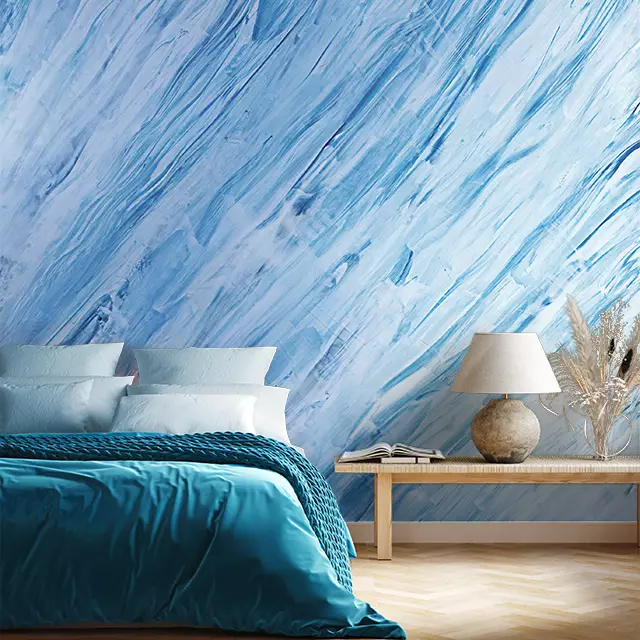 Decorative paints are essential coatings used to transform the aesthetic appeal of interior and exterior surfaces while providing protection and durability. They offer a vast array of colors, textures, and finishes that enable architects, designers, and homeowners to express creativity and personalize spaces. Beyond beautification, decorative paints help protect walls, ceilings, and facades from environmental damage such as moisture, UV rays, and wear. Advances in formulation have introduced eco-friendly options with low volatile organic compounds (VOCs), improved washability, and resistance to mold and stains. Suitable for residential, commercial, and public buildings, decorative paints combine visual impact with functional benefits, making them indispensable in modern construction and renovation projects. This article explores the types, benefits, applications, and innovations of decorative paints that continue to shape interior and exterior design trends worldwide.
Decorative paints are essential coatings used to transform the aesthetic appeal of interior and exterior surfaces while providing protection and durability. They offer a vast array of colors, textures, and finishes that enable architects, designers, and homeowners to express creativity and personalize spaces. Beyond beautification, decorative paints help protect walls, ceilings, and facades from environmental damage such as moisture, UV rays, and wear. Advances in formulation have introduced eco-friendly options with low volatile organic compounds (VOCs), improved washability, and resistance to mold and stains. Suitable for residential, commercial, and public buildings, decorative paints combine visual impact with functional benefits, making them indispensable in modern construction and renovation projects. This article explores the types, benefits, applications, and innovations of decorative paints that continue to shape interior and exterior design trends worldwide.

Understanding Decorative Paints and Their Role
Decorative paints are coatings applied primarily for aesthetic enhancement but also provide a protective layer on surfaces such as walls, ceilings, woodwork, and exteriors. Unlike industrial or protective coatings focused mainly on performance, decorative paints balance appearance with durability. They come in various types including emulsions, acrylics, enamels, and textured paints, each offering unique visual and tactile effects.
These paints are designed to adhere well to different substrates like plaster, drywall, concrete, metal, and wood. They allow for customization in color and finish, ranging from matte and satin to high gloss and metallic sheens. Some decorative paints also incorporate additives that improve resistance to fading, staining, and microbial growth, ensuring long-lasting beauty and hygiene.
In architectural projects, decorative paints play a pivotal role in defining ambiance, style, and personality of spaces. Whether aiming for a modern minimalist look, classic elegance, or vibrant creativity, the right decorative paint can transform the visual and emotional experience of any environment.
Types and Finishes of Decorative Paints
Decorative paints come in a variety of formulations and finishes to meet diverse design and functional requirements:
Emulsion Paints: Water-based and popular for interior walls and ceilings, emulsions dry quickly, emit low odors, and provide a smooth matte or silk finish.
Acrylic Paints: Offering excellent durability and UV resistance, acrylic decorative paints are suitable for both interior and exterior applications, providing vibrant color retention.
Enamel Paints: Known for their hard, glossy finish, enamels are ideal for woodwork, metal surfaces, and areas requiring extra washability and protection.
Textured Paints: These create tactile surfaces with patterns or finishes such as sand, stone, or stucco, adding depth and character to walls.
Specialty Finishes: Metallic, pearl, chalk, and crackle effect paints enable creative expression with unique visual textures and reflections.
Choosing the appropriate paint depends on the surface type, desired aesthetic, and environmental exposure. For example, high-gloss enamels may be preferred in kitchens for their easy cleaning, while matt emulsions suit living rooms for a cozy atmosphere.
Benefits of Decorative Paints
Decorative paints offer several key advantages beyond aesthetics:
Durability and Protection: Many formulations resist moisture, stains, fading, and abrasion, extending the lifespan of painted surfaces.
Health and Safety: Low-VOC and zero-VOC options reduce harmful emissions, promoting better indoor air quality.
Ease of Maintenance: Washable and scrub-resistant paints make cleaning simple, ideal for high-traffic areas and homes with children or pets.
Versatility: Available in countless colors and finishes, decorative paints support any design vision.
Environmental Sustainability: Eco-friendly paints use renewable resources and biodegradable ingredients, aligning with green building certifications.
These benefits contribute to improved occupant comfort, reduced maintenance costs, and enhanced property value.
Innovations and Trends in Decorative Paints
The decorative paint industry continually evolves with innovations that enhance performance and creativity:
Smart Paints: Incorporating microcapsules or nanoparticles, these paints can self-clean, resist bacteria, or change color with temperature shifts.
Eco-Friendly Formulations: Increased demand for sustainable products has led to waterborne paints with minimal VOCs and natural pigment options.
Advanced Textures and Effects: Techniques such as metallic flake, pearlescent finishes, and 3D textures enable sophisticated designs that were previously difficult to achieve.
Improved Durability: Enhanced resistance to mold, mildew, and UV degradation extends paint life, especially in challenging climates.
Digital Color Matching: Technology now allows precise color matching and custom formulations to meet exact design specifications.
These trends make decorative paints not only a functional necessity but also an artistic medium, empowering designers and homeowners to create inspiring environments.
